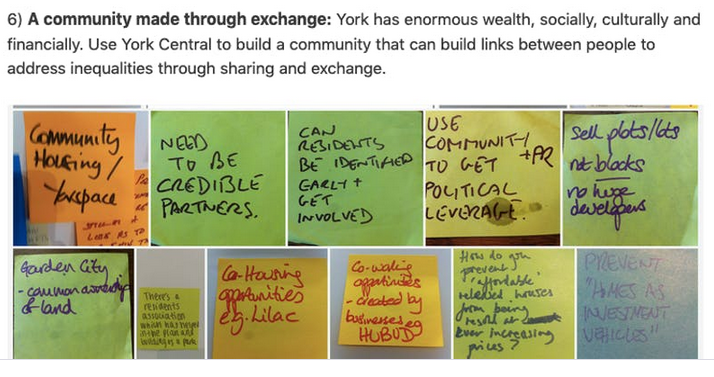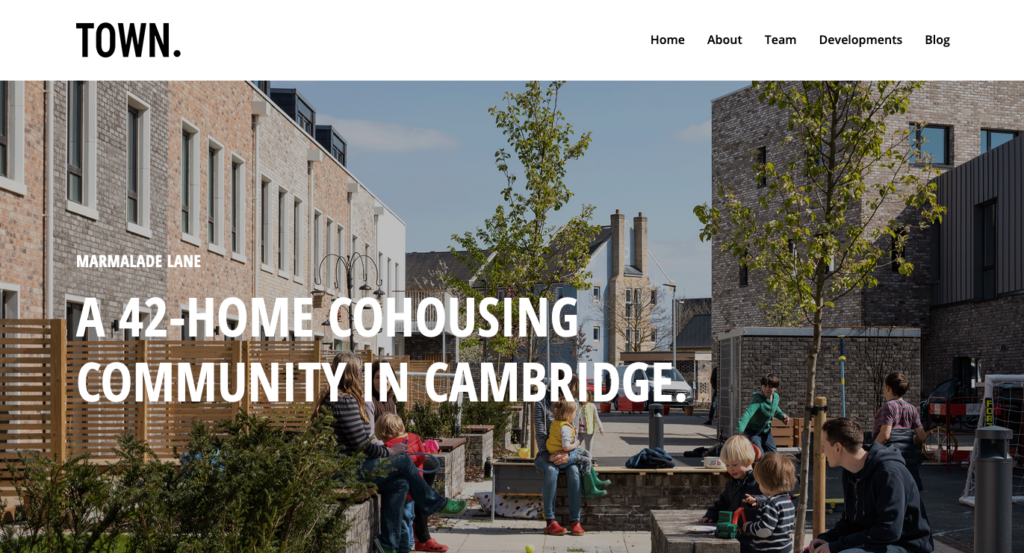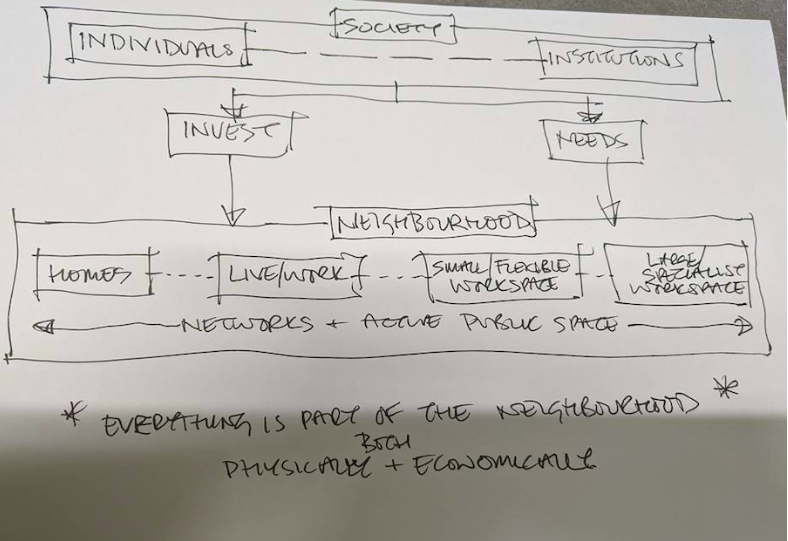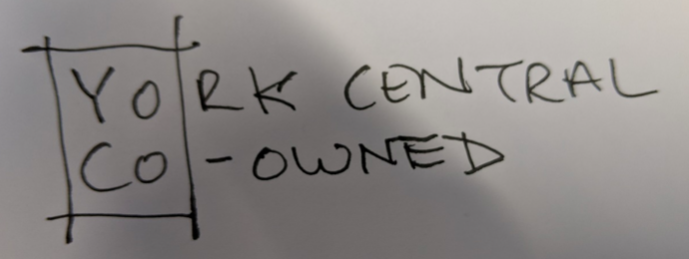
4-7.30pm, 24th October 2019
Introduction
The York Central Masterplan emerged from a process that took over three years (for just the most recent version – many recall proposals from fifteen years ago or more). There was conventional “consultation” on key early masterplan elements and access route, followed by My York Central process March 2018 onwards which included a five week Festival of York Central. The Masterplan formed a basis for an outline planning application submitted in August 2018. The application was approved by committee in March 2019.
The York Central Masterplan retained a number of key ideas from the original design proposals pre-dating the My York Central process: – a linear green space running through the site, a public square between the station and NRM, and closure of Leeman Road to allow expansion of the NRM. It included up to 2,500 new homes and creation of up to 112k m2 of office, leisure and retail floorspace.
The My York Central vision and eight big ideas were developed through public engagement in March – August 2018 resulting in around three and a half thousand Post-It notes collected and scanned, uploaded to Flickr and tagged to create a searchable database of public input. This open and inclusive process continued with public workshops to develop and refine the final My York Central Vision document, the Key Principles which underpinned it and the My York Central Big Ideas.
Fascinating questions arise from the intersection of the big ideas:
• How can we create an intergenerational circular economy?
• How can people downsize and use capital to invest in stuff which enriches neighbourhood and their lives?
• How can we make use of York’s inequality for good; How can we help York’s hidden creative industries flourish?
• How might the mixed-use neighbourhood of the future be more like the past than the present?
Group discussion
What would a mixed-use neighbourhood mean to me? Post-Its collected and clustered to identify key issues for the discussion in the final part of the workshop.
Looking for inspiration
There were two presentations to generate questions.
- TOWN – Neil Murphy on the making of, and ten key lessons from, Marmalade Lane. A partnership between a creative developer and a co-housing group making a humane, much-loved neighbourhood.
- Citu – Chris Thompson presentated on the Leeds Climate Innovation District. Innovative construction which provides training and employment, and co-ownership of public realm and energy networks.
Questions and answers, and further notes on Post-Its were added for discussion in the final session of the workshop.
York Central Partnership and Homes England
We then heard from York Central Partnership and Homes England.
- Ian Gray (YCP project director) – Outline consent gets the project where it needs to be at this stage, and allows engagement by developers and finance partners. But it’s a starting point. Community engagement can shape it from here.
- Helen Fielding (HE Leeds office) – Homes England have funding through Community Housing fund and other routes and are keen to support community-led initiatives as part of delivering the homes which the country needs.
Group workshops
The workshop then split into three discussions to explore different possibilities and approaches.
- Tim Moon – collective custom build – What does custom build / self build really mean – how dirty do people get their hands? How do we do custom build at scale and where are there examples? How do we reconcile different expectations into a streetscape which works?
- Imelda Havers – Yorspace and People-Powered Housing – what is Yorspace about and how is it going about building forever affordable housing? What legal bodies are needed and what are their different purposes? How will Lowfield Green happen and how might Yorspace be involved in housing on York Central?
- Irena Bauman – Built InCommon and very local design & construction – how did we give up the process of actually building homes and let it become remote from us? How can innovative use of technology re-connect people with the homes built for them? How might flying factories create local training and local businesses?
Group Discussion
Clustered Post-Its were set out on tables and everyone invited to join one table and take the issue forward. Aim was to ask:-
• What questions does this issue raise?
• Who do we need in the room in order to get answers and move forward?
• What are the immediate next steps we can take?
Identity
Identity is established at the beginning and confirmed at the completion of a project? Or does it form over the lifetime of a project as the community forms?
Identity can be based on history and heritage – which is more likely to be industrial or social than residential – but should also look forwards.
Identity should be organic and broad, not contrived.
Identity should speak to the broader community.
Sharing
What does sharing actually mean – what are the shared places? They can vary from mainly private space which is occasionally shared, to the completely shared such as a common house or pub.
York Arts Centre (on Micklegate, now a bar) was a good example of shared space, available for all sorts of uses and appreciated by the community.
Communities tend to form around income groups – shared spaces are important as they allow these groups to mix.
Mixing
Need to provide for groups which have social value – for example students remaining in the city and starting up businesses, generating economic activity. Start-up space has value.
New community spaces will have value to broader community beyond site boundaries – need to build bridges (literally as well as metaphorically.
We could bring water onto the site to create social space – the river isn’t far away.
The importance of the site should be acknowledged by all – especially the major partners (including the council) who should really think to the future.
Playfulness
Play is important in respect of intergenerational relationships – stuff of life gets done and is an opportunity for links between generations.
Good things can come out of chaos – name the killer hit single which was born in a pristine recording studio. Not advocating “designing in crack dens” but we should ensure there is some sort of chaos, some unformed places.
Haven’t heard the word “renting” – we need to retain student talent and their lives often don’t need ties of ownership. Can we provide this innovatively? For example intergenerational living and working – mixed neighbourhoods. If these are sufficiently dense and walkable then care provided for all works for the older residents too.
Play isn’t just for children – public realm is an “anchor tenant”.
Ownership
High cost of acquiring land makes innovation hard, and makes affordable homes hard to provide.
“The council need to speak to each other” – silos need to be broken out of. Innovative thinking is needed and innovative partnerships are part of this.
Connections
Connections with the past – “identity often comes from past transport and infrastructure”.
Need to open up connections with other parts of the city – create routes through the site but ensure these are not about traffic – don’t make them “normal roads”.
First step should be to revisit the public vision for the development, and see how the declaration of climate emergency allows for fresh conversations with highways and planners.
Wildness
Wild space can make people happy and healthy – and also save money.
The proposed park is an own goal by being overly curated – we need natural urban space.
We should be creating wild places where kids can explore. But we can also grow food in cities.
Can we make York Central invisible from space? Can we make it better than carbon neutral, and can we make it so diverse “that it pumps out life-forms across York”?
The Next Steps
There was agreement that it was vital the community should be engaged in the development planning process right from the start. How do we do this? Should there be one participative community that acts both to monitor overall direction of the development and engage much more actively in aspects of it? What sort of body is most appropriate to carry forward the community’s involvement? Is it a loose, non-membership body where the consistent elements are the ideas/issues/proposals or is there a role/need for a body which brings greater individual/institutional commitment – some sort of “pioneer group” which is effectively the beginnings of a client body, representing the users of the new neighbourhoods?
There was much discussion about the need for a mixture of tenures. How do we establish what we need to ensure this happens?
There was a wish for the development to have outdoor space of all sorts – some to foster group activity, some to grow food, some to be full of wildlife. Who needs to be involved to make this happen? How can we think about bringing water onto the site? How do we ensure that re-thinking aspects of the approved outline planning consent is done with support from York Central Partnership?
We need to work out what sort of commercial space will work well and bring social value, and how York Central can become a place where creative industries thrive. How do we build links with the universities and other partners to develop a brief for this and make it happen? And more broadly, how do we ensure we have all of the necessary people “in the room”?
A lot of people stated that the development should be car-free. Since the masterplan was developed, York has declared a climate emergency and the most recent election / council power shift has potentially opened the door to reconsideration of the development’s response to transport issues. Can these be looked at in a coordinated way between the council (members and officers), local groups (such as Civic Trust Transport Group / York Environment Forum / YCC etc) and interested individuals?



